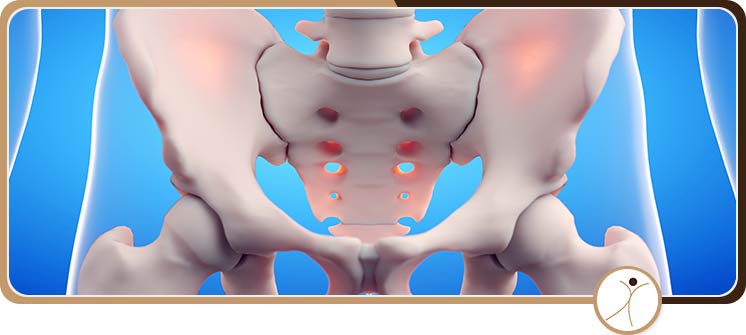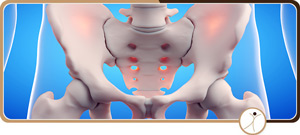Dealing with Sacroiliitis: Understanding the Impact on Your Spine
Sacroiliitis, the inflammation of one or both sacroiliac (SI) joints where your spine connects to your pelvis, can significantly impact your overall spinal health and mobility. Visit Dr. George Atallah, D.O., who can accurately diagnose the condition through physical exams and imaging, and then develop a comprehensive treatment plan to alleviate pain, restore function, and prevent long-term spinal complications. For more information, contact us or book an appointment online. We have convenient locations to serve you in Houston TX and Sugar Land TX.


Table of Contents:
What is sacroiliitis, and how does it affect the spine?
What are the common symptoms of sacroiliitis that impact spinal health?
How is sacroiliitis diagnosed and differentiated from other spine-related conditions?
What are the treatment options for managing sacroiliitis and relieving spine pain?
Sacroiliitis is a condition marked by inflammation of one or both sacroiliac (SI) joints. These critical joints, located at the base of the spine where it connects to the pelvis, are responsible for supporting the upper body’s weight and allowing smooth movement during everyday activities.
Symptoms and Impact
Sacroiliitis commonly causes pain in the lower back, buttocks, and even radiates down the legs. Many of our patients report that their discomfort worsens with activities like standing for long periods, climbing stairs, or bearing weight on one leg. Stiffness in the hips or lower back, especially after resting, can further limit mobility and impact daily life.
If left untreated, sacroiliitis can disrupt the spine’s normal alignment and restrict the flexibility of the lower back and pelvis. Chronic inflammation may eventually damage the joints or contribute to more serious spinal conditions, such as ankylosing spondylitis, leading to significant loss of mobility.
Our Approach at Modern Pain Management
We recognize the importance of an accurate diagnosis and a tailored treatment plan. Our pain specialists use advanced diagnostic tools—including imaging and targeted physical exams—to pinpoint the source of your pain. We then develop a comprehensive, individualized treatment strategy.
Our goal is to relieve your pain, restore your function, and help you return to your daily activities with confidence. Early and effective intervention is the key to preventing long-term complications and maintaining your quality of life.
Sacroiliitis, the inflammation of one or both sacroiliac joints that connect your lower spine to your pelvis, can have a significant impact on your daily life and overall spinal health. Individuals with sacroiliitis often experience persistent lower back and buttock pain, which can worsen after long periods of sitting or standing. Pain may also radiate into the thighs or upper legs, and many patients notice increased stiffness in the morning or after inactivity, making movement in the lower back and hips difficult.
At Modern Pain Management, our team understands how sacroiliitis can limit your mobility and quality of life. We frequently see patients who struggle with pain that intensifies during activities such as climbing stairs, running, or even standing up from a chair. Swelling and tenderness over the sacroiliac joints can further restrict movement and contribute to chronic discomfort.
Left untreated, chronic inflammation from sacroiliitis can reduce spinal flexibility and lead to changes in gait or posture, potentially affecting your overall spinal alignment and function.
Lower back pain can be challenging to diagnose, especially when it mimics other spine-related conditions. One frequent, yet often overlooked, source of persistent lower back pain is sacroiliitis, inflammation of one or both sacroiliac (SI) joints at the base of the spine.
Comprehensive Assessment for Accurate Diagnosis
Our expert pain management specialists begin with a thorough evaluation, including an in-depth medical history and a focused physical examination. We carefully discuss your pain’s onset, duration, and characteristics, along with associated symptoms like stiffness, fever, or a personal or family history of inflammatory diseases (such as ankylosing spondylitis).
During your visit, we utilize specific, evidence-based examination techniques such as the FABER (flexion, abduction, and external rotation) test, Gaenslen’s test, and direct palpation to pinpoint SI joint involvement. These maneuvers help us differentiate sacroiliitis from other common causes of lower back pain.
Advanced Imaging and Laboratory Testing
• Modern Pain Management is committed to using advanced diagnostic tools to ensure an accurate diagnosis. We offer:
• Digital X-rays to assess for chronic changes in the SI joints, such as narrowing or sclerosis.
• Magnetic Resonance Imaging (MRI) to detect early inflammatory changes, bone marrow edema, and synovitis that may not be visible on X-rays.
• CT scans are used when a detailed assessment of bone structures is needed.
Differentiating Sacroiliitis from Other Conditions
Our multidisciplinary team excels at distinguishing sacroiliitis from other conditions such as lumbar disc herniation, facet joint arthritis, or mechanical low back pain. We rely on a combination of your pain’s pattern and location, physical examination findings, and imaging results.
Sacroiliitis is a condition characterized by inflammation of one or both sacroiliac joints where the lower spine and pelvis meet—can cause significant discomfort and limit your daily activities. Our multidisciplinary team specializes in the latest, evidence-based approaches to diagnosing and treating sacroiliitis, with a focus on reducing inflammation, relieving pain, and restoring your function and quality of life.
Personalized, Conservative Care First
Our care always begins with the least invasive, most effective strategies. We help patients modify activities to avoid movements that worsen pain and recommend the appropriate use of ice or heat to ease discomfort. Our physicians may prescribe targeted medications, such as nonsteroidal anti-inflammatory drugs (NSAIDs), muscle relaxants, or analgesics, to control inflammation and pain. When oral medications are insufficient, we offer precise image-guided corticosteroid injections directly into the sacroiliac joint, delivering potent anti-inflammatory relief exactly where it’s needed.
Expert Physical Therapy Integration
Physical therapy is a cornerstone of sacroiliitis care. We collaborate with skilled physical therapists who provide individualized exercise programs to strengthen supporting muscles, improve flexibility, and optimize posture.
Advanced Interventional Pain Procedures
For patients whose pain persists despite conservative measures, we offer advanced interventional procedures. Radiofrequency ablation—performed in our state-of-the-art facility—can disrupt pain signals from the sacroiliac joint, providing long-lasting relief for chronic cases. In rare, severe cases, we discuss surgical options, such as sacroiliac joint fusion, ensuring patients fully understand the risks and benefits.
Addressing Root Causes and Supporting Long-Term Health
Our comprehensive approach includes investigating and addressing underlying causes such as autoimmune disorders, infections, or biomechanical issues.
A Tailored, Collaborative Approach
Every patient at Modern Pain Management receives a personalized treatment plan, developed in close partnership with our experienced pain specialists. For more information, please contact us or book an appointment online. We have convenient locations to serve you in Houston TX and Sugar Land TX. We serve patients from Houston TX, Sugar Land TX, Pearland TX, Jersey Village TX, Missouri City TX, Stafford TX, and Richmond TX.
ADDITIONAL SERVICES YOU MAY NEED




